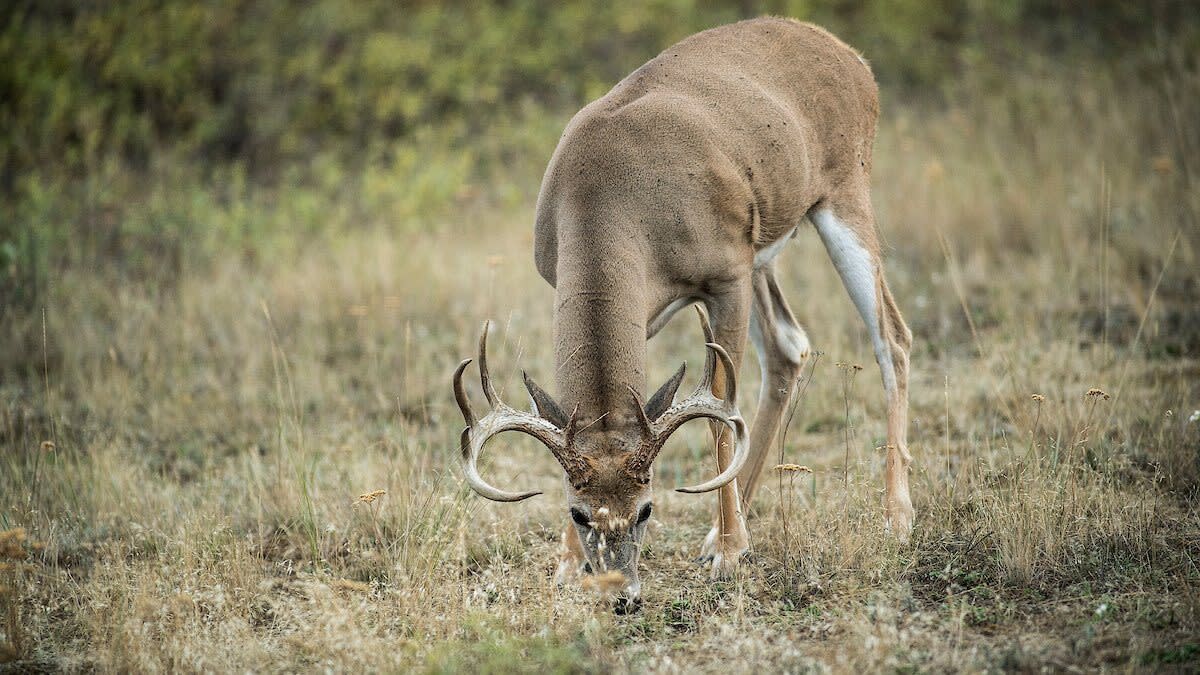
If you're a public land whitetail fanatic, you don't need lush food plots or ag fields to find early-season success. In fact, we often prefer other food sources. Nothing against these two staple spots, but deer are still consuming native vegetation as their primary diet, even on properties where these resources exist. They've been filling their bellies with the land's nutrient-dense natural plants for generations. Knowing what the native plants have to offer can pay off in woodsmanship skills and filled tags.
The key is being able to successfully identify attractive vegetation, which you should then target for deer movement. When moisture and nutrients are prominent in these plants, they can give you a chance in the early season. Be detail-oriented and observe browse pressure, but you can't exclusively rely on that strategy alone. If you can identify desirable plants, you can home in on public land feeding hotspots where the odds are otherwise stacked against you.
Let's take a look at a few different species of native vegetation deer desire during the early season. These are found across the whitetail's range.
Common Ragweed
Ragweed gets a bad rap for the allergies it causes, but deer consider it a delicacy. At maturity, ragweed plants can reach nearly 7 feet high and offers a crude protein percentage of 17 to 18%. Their leaves are long with deep lobes.
It occupies the edges of timber and grown-up fallow fields, providing excellent cover and nutrient-rich food. It grows very well and can be very competitive in choking out other plants. It’s attractive to deer well into the early season and offers good moisture content and high protein levels. On the public lands you hunt, look for ragweed in grown-up grassy areas, non-wooded bedding areas, security cover, and edges.
Annual Fleabane
You've probably seen and walked right past native fleabane without a second thought. Most attractive in its early growth stage, the plants only reach a few feet at maturity. Their small white flowers with yellow centers are easily recognizable. Similar to ragweed they provide a good structure for nesting birds and wildlife.
For deer, fleabane is a desirable food source that offers a good source of crude protein at 20% and is widely available. Look for fleabane in old fields commonly used for bedding, security cover, and staging areas. This warm-season plant is attractive through the beginning of the early season, so you'll want to find it quickly to determine how much the deer are feeding on it in your area. It's widespread across much of the whitetail's range.
Virginia Creeper
Virginia Creeper is one of the most common vines. It grows fast and can quickly cover whatever structure it attaches to. The woody stem grows leaves in clusters of five, and it can be highly invasive in woodland settings. Check from ground level to head height for browse pressure. Virginia Creeper isn't necessarily one of the deer's favorite native vegetation types, but it does provide value. If there's a forest habitat on the public land you hunt, look for this vine. With 11 to 13% crude protein, it may surprise you just how much the deer are adding it to the diversity of their early-season diet.
Black Gum
Black gum is a medium-sized tree found throughout the whitetail's range. These trees usually don't exceed 50 feet but after they grow past even a few feet, they essentially become useless to deer. The key is to find black gum at a very early stage.
Their buds and sprouts offer attractive woody browse for deer with 12 to 14% crude protein. If you have any stands of young forest or early successional areas, it's worth looking to find clusters of black gum. The leaves are shiny and oval-shaped, usually growing in small clusters. At a certain point in maturity, they will grow dark blueberries slightly smaller than peas. Just make sure to focus on the immature plants.
If you want to learn more about native vegetation types and how much they attract deer and other wildlife, I highly recommend Dr. Craig Harper's book “Wildlife Food Plots and Early Successional Plants.” It's a goldmine of insight, visuals, and detailed research into what plants benefit deer and what their preferences within their natural environments tend to be.







Conversation